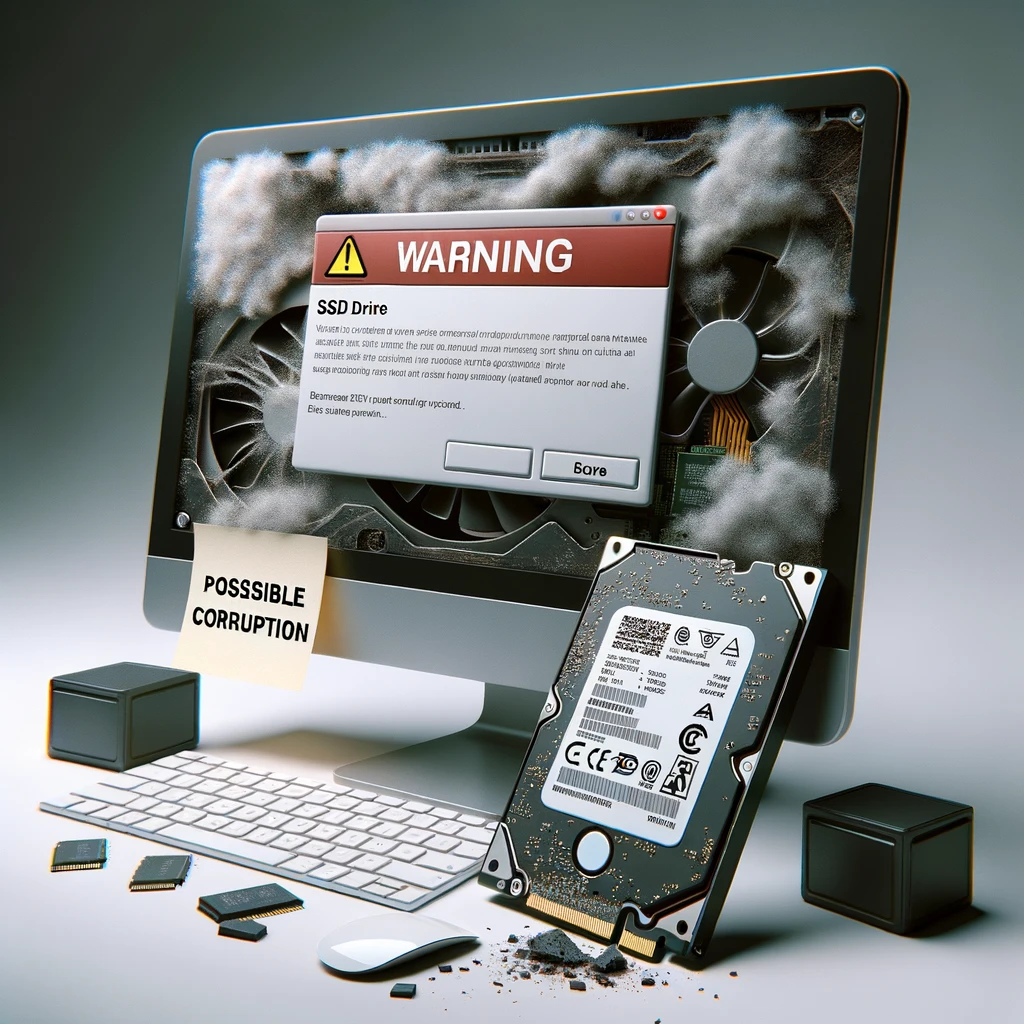
Solid State Drives (SSDs) have revolutionized data storage with their lightning-fast performance and robust reliability. However, despite their superior technology, SSDs are susceptible to data corruption. This article delves into the various scenarios that can lead to SSD corruption, aiding users in understanding and preventing potential data loss.
Power Interruptions: The Silent SSD Killers
Unexpected power interruptions are among the leading causes of SSD corruption. When an SSD is actively writing or transferring data, a sudden power cut can halt the process, resulting in partially written or corrupted data. Over time, these power-related disruptions can lead to file system corruption, making data inaccessible.
Firmware Glitches: The Hidden Perils
Firmware is the brain behind the SSD’s operations, ensuring smooth data management. However, bugs or flaws in the firmware can trigger unexpected data corruption or loss. These glitches can create inconsistencies in data writing or reading processes, leading to potential SSD corruption.
Cell Degradation: The Inevitable Wear and Tear
Each cell in an SSD has a finite lifespan, defined by the number of write/erase cycles it can endure. As these cells wear out, they become unreliable for data storage, which can lead to data corruption. This phenomenon, known as wear leveling, is an inherent trait of the flash memory technology deployed in SSDs.
Bad Blocks: The Hidden Villains
Bad blocks are sectors of the SSD that can no longer reliably store data due to physical damage or manufacturing flaws. Modern SSDs come with mechanisms to identify and isolate bad blocks, but sometimes, they can go unnoticed until data corruption occurs.
Software Missteps: The Unseen Saboteurs
Faulty drivers or incompatible software can also be a source of SSD data corruption. In some scenarios, software bugs can lead to improper data handling, which in turn, causes data corruption on the SSD.
Fortifying Your SSD: Preemptive Measures
While SSD corruption can be daunting, adopting a proactive approach can significantly mitigate risks. Here are some actionable tips:
- Regular Backups: Regularly backing up crucial data is a cardinal rule to prevent data loss due to SSD corruption.
- Utilize a UPS: An Uninterruptible Power Supply (UPS) can protect your SSD from sudden power cuts, ensuring a consistent power supply.
- Software and Firmware Updates: Keeping your system’s software and SSD firmware updated can help in averting potential corruption stemming from bugs.
- Monitor SSD Health: Employ tools that monitor SSD health, offering insights into wear leveling and bad block count.
By following these simple steps and getting to know what makes your SSD tick, you’re setting yourself up for a smooth computer experience. It’s all about catching any small problems before they turn into big headaches. This way, whether you’re diving into a gaming marathon, streaming a movie, or working on a school project, your computer will be ready to handle it all quickly and without any fuss. So, remember, a happy SSD equals a fast and reliable computer, making your digital life a whole lot easier and fun!





